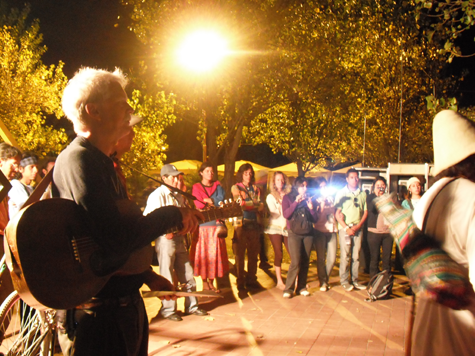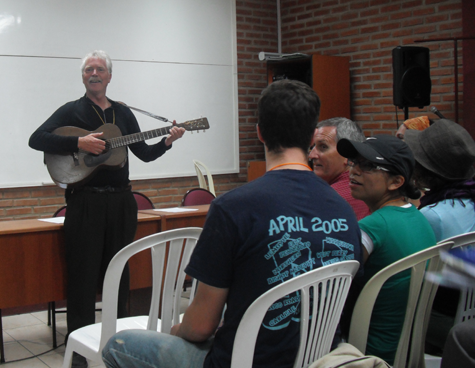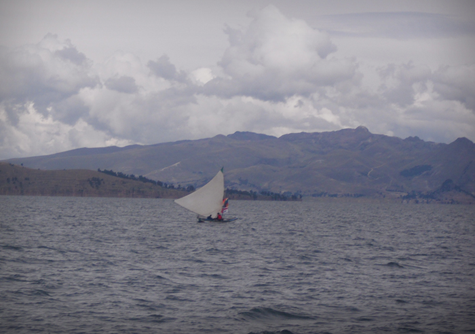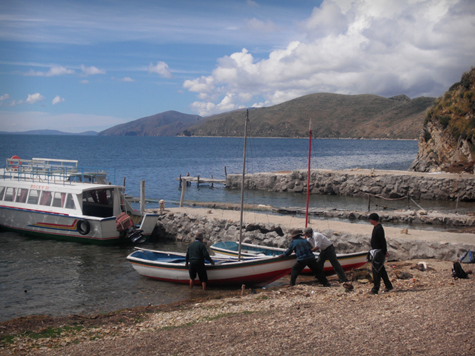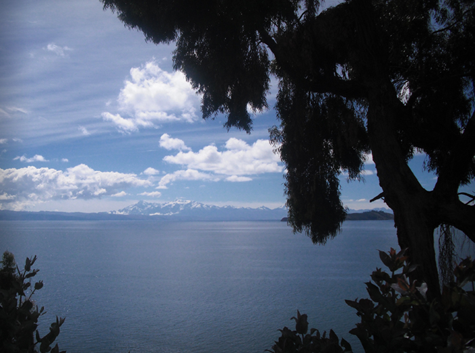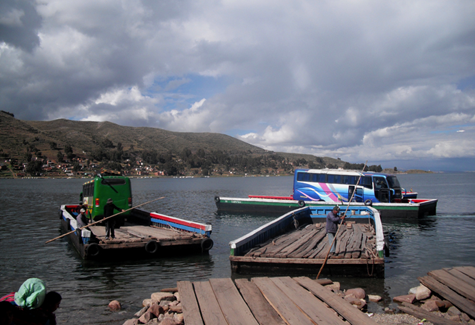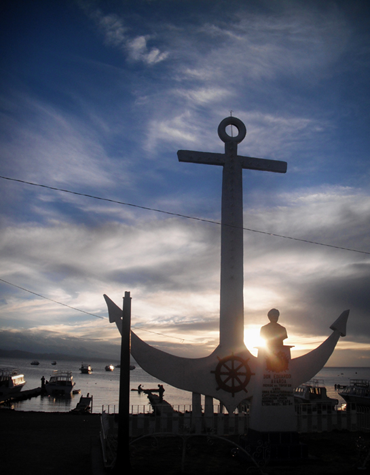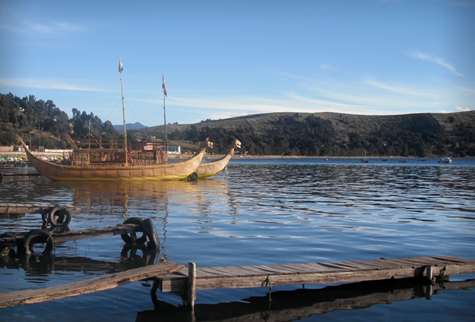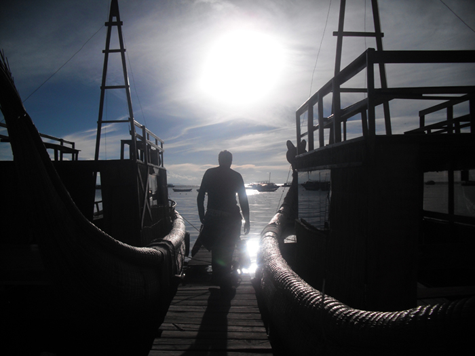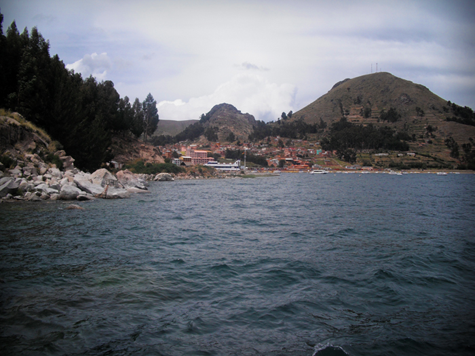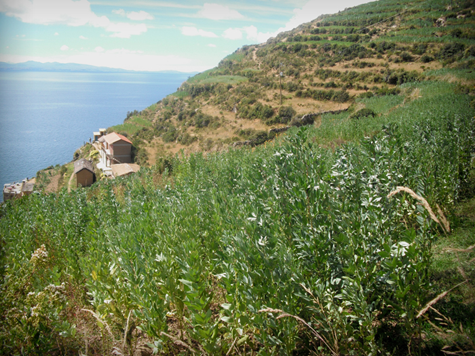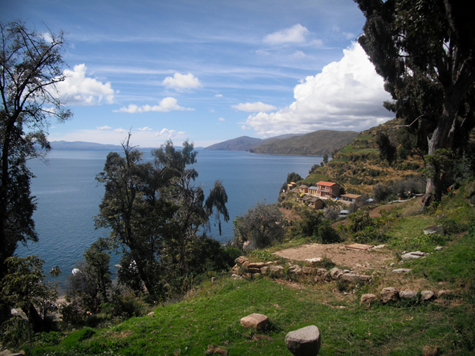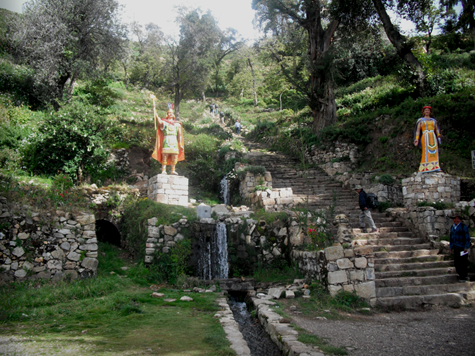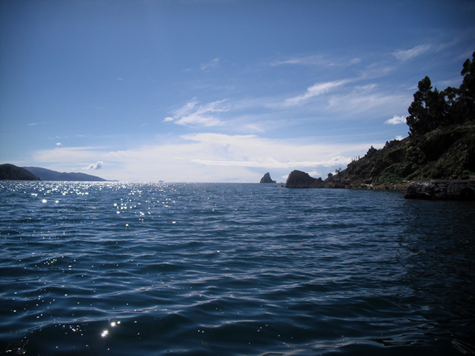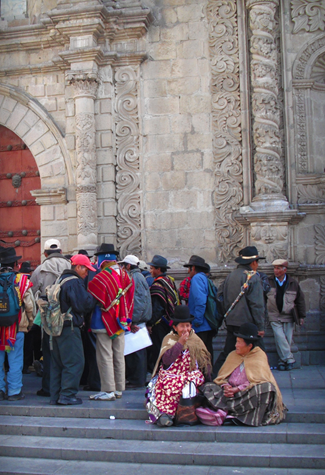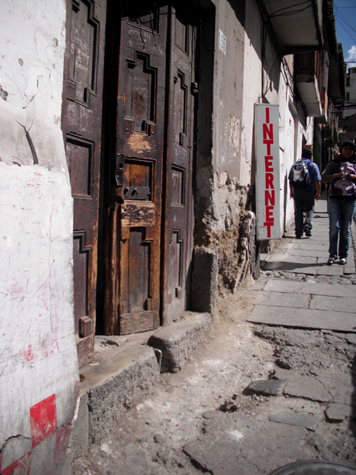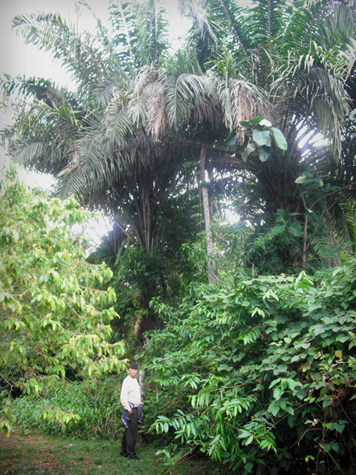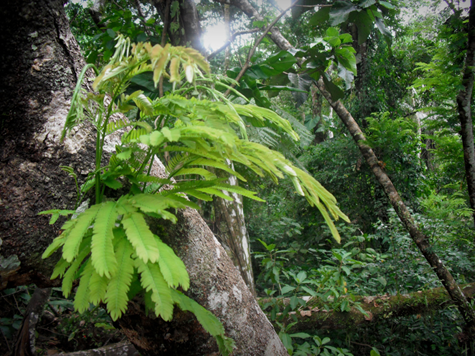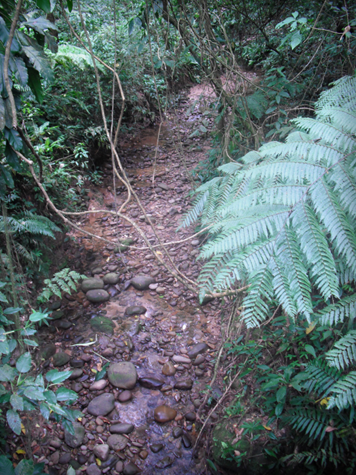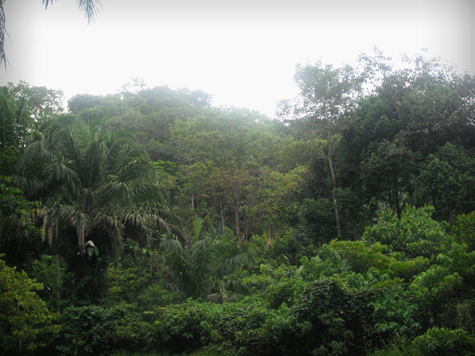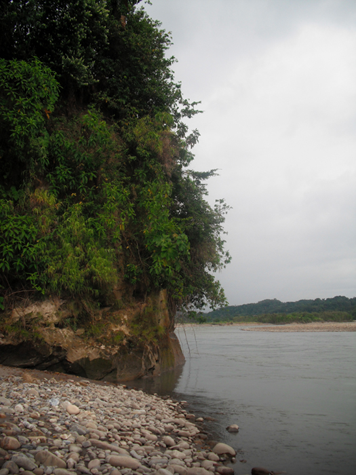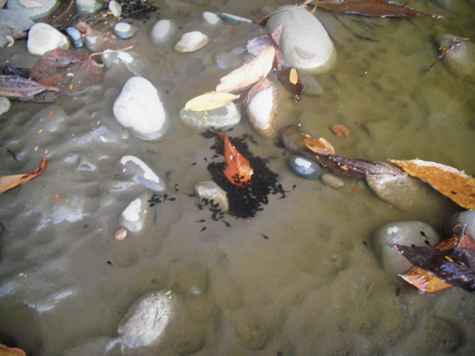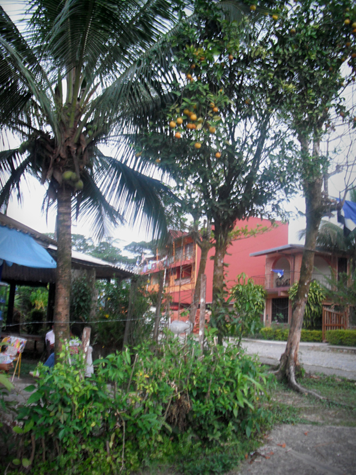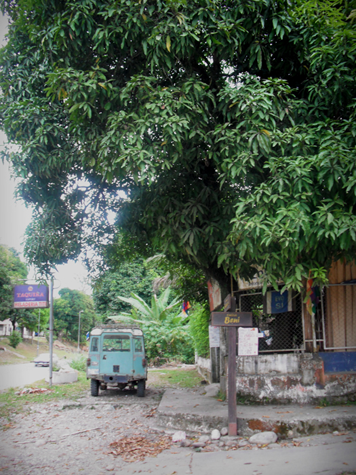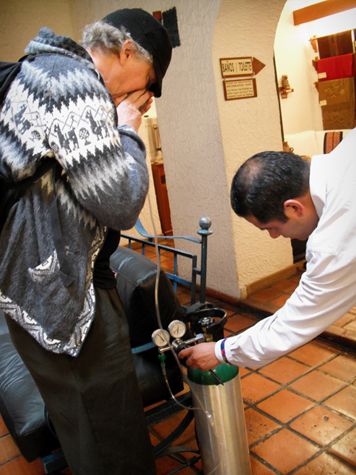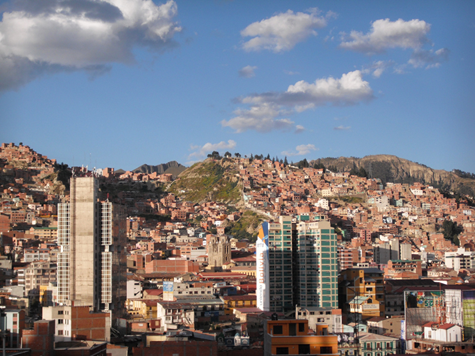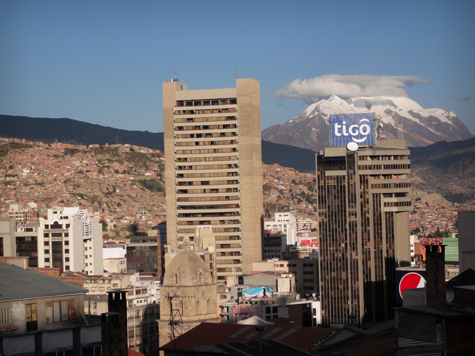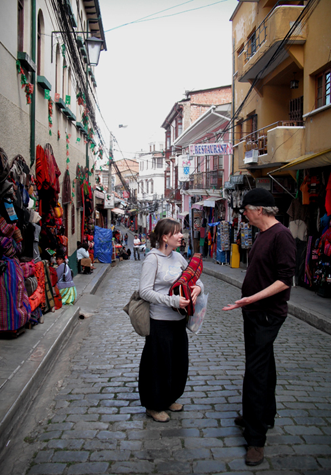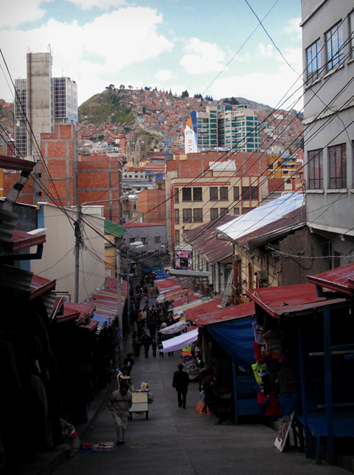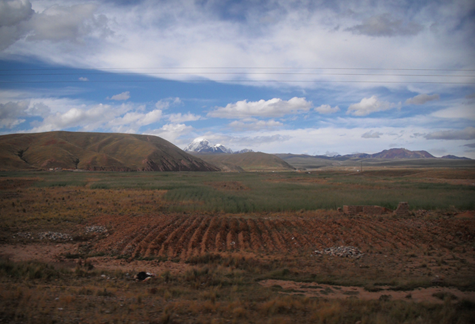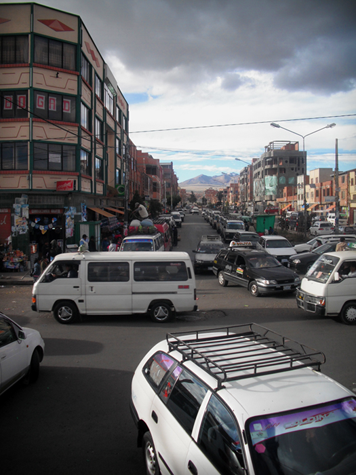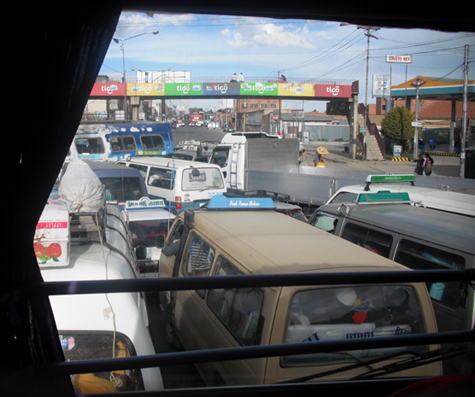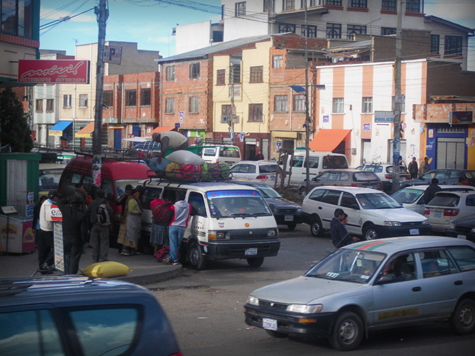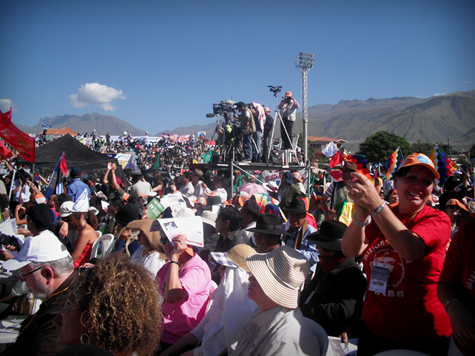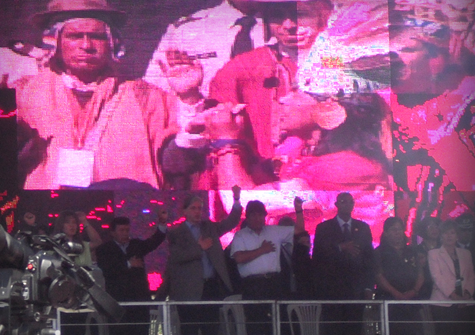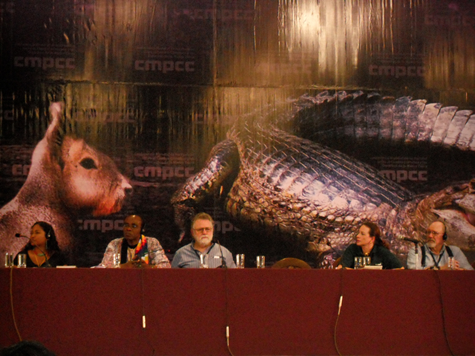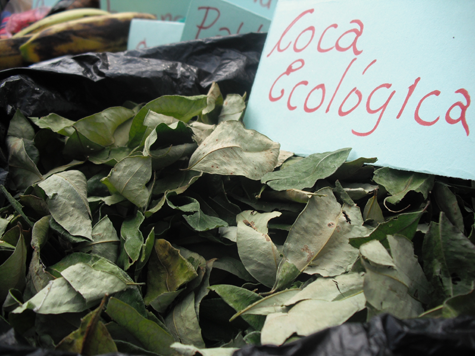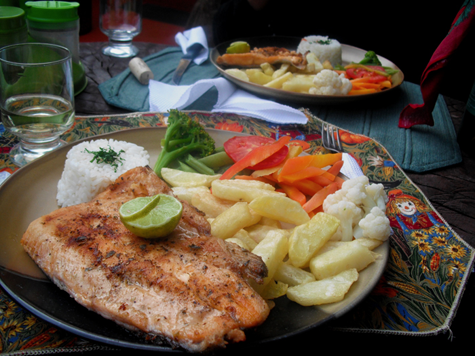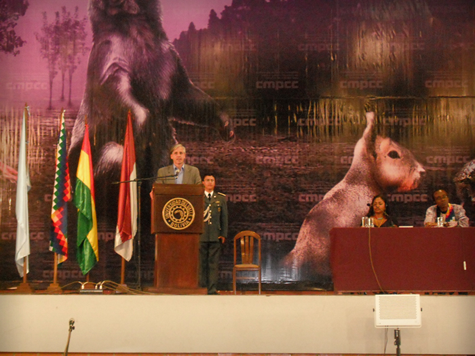 Before presenting our latest photo-journalism direct from the just-concluded People´s Climate Conference, and disturbing you with news of road building and plastics manufacture in Bolivia, we ask you to bear with us one moment regarding the financing of our activism and reporting:
Before presenting our latest photo-journalism direct from the just-concluded People´s Climate Conference, and disturbing you with news of road building and plastics manufacture in Bolivia, we ask you to bear with us one moment regarding the financing of our activism and reporting:
To complete this trip to Bolivia and follow it up properly, successful fundraising is key. We were almost alone at the Cochabamba climate conference when it comes to our issues or our slant on others' main issues. I feel fortunate that I came, learned, taught and shared our literature and my music. But it is time for friends of Culture Change to send along some support if able.
A distinction: we are not of the "dominant critique." A progressive organization that is, putting out a fundraiser last week, asks readers to make "a tax-deductible investment so we can continue to hold power accountable on your behalf." All well and good to try to do that, but even if successful for a time it does not change the power structure or lifestyles. We hope you´ll consider the difference and help keep us afloat. Please go to our donation page or send a check to our address at the bottom of this page. Thank you. - Jan Lundberg
Bolivia in Contrast: Natural Beauty and Tradition versus Feeding the Petroleum Industry with More Roads, Cars and Plastic
Culture Change has learned much more about Bolivia than from reading about it from afar. Indeed, simple ideas about developments here since the Water War of 2000 and the subsequent election of Evo Morales have made fascinating copy in the progressive press. Before we pass along to you our gleanings from knowledgeable sources and present some intense, beautiful photographs, it helps to step back for some global perspective:
In Contrast with Bolivia: Northern Nations´ False Advantages
How do we evaluate what is going on in our lives and the world? Learning can´t exclude deliberation and direct action, but learning must come first and never stop. Reflction can be in conflict with planning, or vice versa, if there is interference the one with the other. In recent decades there seems to be too much unconscious and repetitive action, creating an imbalance with the need to reflect. This results in less than ideal planning. Looking inward as well as perceiving the greater situation from outside one´s usual awareness amount to good reflection. Hopefully one´s conclusions are benign.
My trip to Bolivia (and probably Peru) is becoming a source of reflection during and afterward. I must be learning something! I am thankful I did not opt for a stay-at-home, more predictable course this spring. This trip and all our projects would not be possile without Culture Change supporters who really need to be thanked.
Those of us who believe that the modern world and our lives in it are normal or somehow sustainable -- albeit more hectic than olden times -- are driving at high speed into the wall of resource limits. Additionally, such persons have no idea of the way the world must live as one -- the way most rural and "primitive" people have always done in "poor countries."
This viewpoint comes more easily from traveling to Bolivia, for example, than from being reasonably well informed in the United Paved Precincts of America (UPPA, or USA) by the corporate media and even progressive news sources and excellent books.
It is ironic that the U.S. and other "developed" nations are hurtling into an abyss upon eventual collapse of the house-of-cards extraction economy, while the southern countries mostly strive to emulate the same pursuit of materialism. Both forms of "leadership" are blindly groping for wealth, although the South with more justification sees the need to strive for equal footing in the market economy afflicting the whole world.
It isn´t fair, but the relatively tiny per capita consumption rates in the South are unsustainable, for two reasons: plastic trash, in evidence almost everywhere, is toxic and does not biodegrade. Secondly, the source of this plague -- petroleum and global cash -- will give out, making population sizes now overtaxing local ecosystems impossible to maintain after a sudden oil supply crunch. The latter will tip the global economy over the precipice. Humpty Dumpty has been teetering over for a good while.
Today´s profligate lifestyles of waste, carried out in degrees ranging from the most affluent people down to the plastic-disposing poor who take buses instead of owning cars, is somehow seen as necessary and even superior to lifestyles of all our ancestors. The fortunate are actually those who retain connection to the land and their community along the lines of previous generations who successfully subsisted.
Now to shift to another vantage point with almost as infinite and timely a consideration:
Bolivia in Contrast: Natural Beauty and Tradition versus Feeding the Petroleum Industry with More Roads, Cars and Plastic
Five highways are planned to cut through Bolivia from sea to sea for South American trade, such as Brazil-China. These have been advanced in planning since 2000 via World Bank and other capitalist, neoliberal institutions. But additionally, a road through a glorious national park and jungle, Madidi, has begun with Morales´s blessing; bridges have been built already. Democracy Now! is there as I write this, and I hope my suggestion to a staffer of exposing the road threat will be taken and help shift public awareness toward understanding the meaning of roads development.
There is no doubt that the Evo Morales government will continue as long as possible the motor-vehicle status quo, in part through building roads, despite the impassioned feelings for Mother Earth. The priority of maximizing petroleum resources means transporting toxic products for sale mainly outside Bolivia, a landlocked country in need of cooperating to some extent with neighbors it cannot control.
Anyone studying Bolivia´s situation and history, and trying to understand Morales as a leader, has to reconcile the fact that a radical and well-meaning protester-organizer has constraints. The same can be said for Barack Obama. The difference is that Morales is a break with the past, while Obama has proved to be more like window dressing for a nation hungry for real goods. So Morales, a pragmatic leader with contradictory tendencies (petroleum business-as-usual AND revering Mother Earth), has the inevitable "people around him" exerting influence and advice. Some observers categorically consider Morales as in favor of modernization. He clearly has an internal streak going against much of modernization (see Culture Change´s previous dispatch). Hopefully he has momentum from inside himself and from supportive advisors to keep going with, for example, the only campaign against consuming plastic coming from a head of state. (Evo, watch Mar Sintetico, Our Synthetic Sea DVD, that I gave you!)
Nationalization of the petroleum industries was begun in 2006, and could not have been an overnight accomplishment except on paper if the government had pushed foreigners out in all ways (thus shutting down operations and exports). But it´s interesting that Bolivia´s nationalization was so careful and accommodating that some critics were either scratching their heads or lamenting the compromises. One of the authors on the 2009 book on Bolivia, Dignity and Defiance, told me that the current government is as development oriented as previous regimes.
Nothing is perfect or simple. One can keep digging forever for the truth to help mould the process of positive change. But it´s crucial to also reflect and enjoy the beauty of the world. Bolivia, to many of us, has its share and more, thanks to nature and the nation´s rich, diverse culture. May Bolivia´s stewards and friends propel the sentiments and passions of its people and global campaigners for climate justice toward universal respect for Pachamama -- Mother Earth.
Before or after viewing the photos below you might read our report Bolivia's Evo Morales: Capitalism and Plastic No, Mother Earth and Indigenous Products, Yes if you have not seen it.
* * * * *
Further reading:
Initiative for the Integration of Regional Infrastructure in South America - IIRSA ¨...governments have set up a portfolio of 510 infrastructure projects in the fields of transport, energy and communications, grouped in 47 Groups of Projects, with an estimated investment of US$ 74.5 billion up to December 2009."
Madidi National Park, upper Amazon basin.
Dignity and Defiance: Edited by Jim Shultz and Melissa Crane Draper. On Bolivia´s recent history, it was published in 2009 by University of California Press.
Braskem to set up polyethylene plant in BoliviaPhotos of Bolivia in April 2010 by Bronwyn Lundberg:
April 12, 2010Braskem, a Brazilian petrochemical company, intends to set up one metric ton per year polyethylene plant in Bolivia, by investing US $2 billion to $3 billion...
This plant is likely to be installed in Puerto Suárez, Santa Cruz province. Announcement for this new development was made after discussions with, Carlos Villegas, President of Bolivia’s state-owned hydrocarbons company, YPFB, in La Paz. After a firm decision is taken, the project will be implemented within a five-year time period.
...Braskem will utilise ethane derived from natural gas, to produce plastic resin. A part of the investment has to be carried out by Bolivia for the process of separation of ethane from gas to make the project feasible, while Braskem will undertake the remaining procedures..."
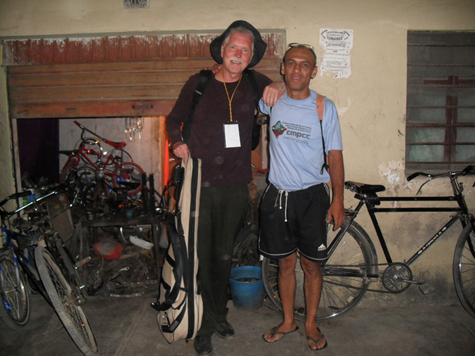
Ricardo Eid, shown outside his friend´s bike shop in Tiquipaya, is a mainstay of the anti-car/pro-bicycling movement in Cochabamba and Bolivia. To round out his information resources for his network, Culture Change gave him four recent books: Plan C, by Pat Murphy; Time´s Up, by Keith Farnish; Community Resilience Toolbook, by Bay Localize, and Ragnarok, by Tuna Cole. Richard is a former English teacher, and he organized the Bicycling against Capitalism workshop at the Climate Conference.
